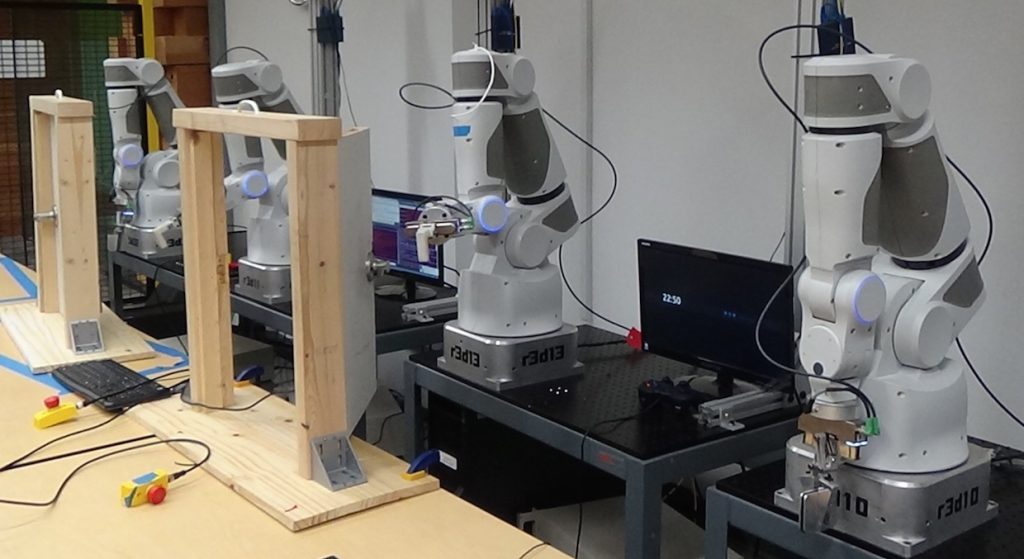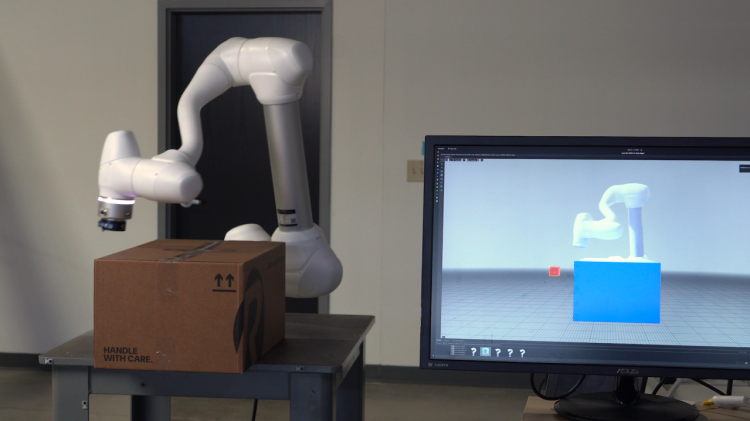Introduction
In recent years, Reinforcement Learning (RL) has emerged as a transformative approach for enabling robots to perform complex tasks autonomously. Unlike traditional programming methods, where specific instructions are coded for every action, RL allows robots to learn and optimize their behavior by interacting with their environment. This self-learning process, where robots continuously improve based on feedback, opens up new possibilities for creating machines that can adapt to dynamic and unpredictable situations without human intervention.
This article will explore the role of Reinforcement Learning in robotics, focusing on how RL enables robots to learn autonomously, optimize their actions, and adapt to various environments. We will also examine the current state of research in this field, its applications, and the challenges that need to be addressed to fully harness the potential of RL for robotic systems.
What is Reinforcement Learning (RL)?
Reinforcement Learning is a subfield of Machine Learning where an agent learns to make decisions by performing actions in an environment and receiving feedback in the form of rewards or penalties. The agent’s objective is to maximize its cumulative reward over time. The learning process is often modeled as a Markov Decision Process (MDP), where the agent must choose the optimal action at each step based on its current state, with the goal of achieving the highest total reward.
In the context of robotics, RL enables robots to autonomously learn and improve their behavior by trial and error. Instead of being programmed with specific instructions for each task, the robot explores its environment, interacts with it, and uses feedback to adjust its actions. Over time, the robot refines its decision-making process to achieve greater efficiency, accuracy, or performance.
How RL Works in Robotics
The core components of an RL system are the agent, the environment, and the reward system. Here’s how they work together in the context of robotics:
- Agent: The robot itself is the agent, which perceives the environment through sensors and takes actions to achieve a specific goal (e.g., pick up an object, navigate through a space).
- Environment: The environment includes everything the robot interacts with. This could be a physical world, such as a factory floor or a home, or a simulated environment for training purposes.
- Action: The robot performs actions that alter the state of the environment, such as moving, grasping, or rotating an object.
- State: The state represents the current condition of the environment as perceived by the robot, such as the position of objects or the robot’s own orientation.
- Reward: After taking an action, the robot receives feedback in the form of a reward or penalty. Positive rewards encourage the robot to repeat the action, while penalties push it to avoid certain behaviors.
- Policy: The policy is a strategy or mapping that defines how the robot decides on the next action based on its current state. It evolves over time as the robot learns from the rewards it receives.
- Value Function: The value function estimates the long-term reward of being in a particular state and following a given policy. It helps the robot assess which states are more favorable to reach.

Applications of Reinforcement Learning in Robotics
The potential of RL to transform robotics is vast, with applications spanning numerous industries, including manufacturing, healthcare, autonomous vehicles, and service robotics. Below are some key examples where RL is being leveraged to enhance robotic capabilities:
1. Autonomous Navigation and Path Planning
One of the most prominent applications of RL in robotics is in autonomous navigation. In environments such as warehouses, factories, or even outdoor terrain, robots must navigate complex spaces while avoiding obstacles, adjusting to dynamic environments, and reaching specific goals.
Through reinforcement learning, robots can learn to autonomously plan paths, optimize their movements, and improve their efficiency over time. For example, a robot tasked with delivering packages in a warehouse could use RL to learn the best routes, avoid crowded areas, and optimize its speed based on the current state of the environment.
2. Robot Manipulation and Grasping
Another critical area where RL is used is robot manipulation. Tasks such as object grasping, assembly, and manipulation require a high level of precision and adaptability. Traditional programming methods struggle in this context due to the vast number of possible actions and environments a robot might encounter.
By using RL, robots can learn how to manipulate objects autonomously by exploring different strategies, receiving feedback, and improving their tactics over time. For instance, a robot can use RL to determine the most effective way to pick up objects of various shapes and sizes, optimizing for grip strength, speed, and safety.
3. Human-Robot Interaction (HRI)
In collaborative settings, such as cobots working alongside humans, robots must learn to interact safely and effectively with people. RL is increasingly used to enable robots to learn social norms, communication strategies, and appropriate responses to human actions.
Through continuous interaction, the robot can learn to adjust its behavior based on human cues, such as proximity, gesture, or verbal communication. RL enables robots to adapt their responses in real-time, ensuring smoother collaboration and reducing the risk of accidents in shared workspaces.
4. Autonomous Vehicles and Drones
The combination of RL and robotics has been particularly impactful in the development of autonomous vehicles and drones. These machines must navigate real-world environments while avoiding obstacles, maintaining stability, and adhering to traffic laws.
RL allows autonomous vehicles to learn from their environment by simulating driving scenarios, adjusting their policies to optimize safety, energy efficiency, and navigation accuracy. Similarly, drones use RL to navigate through complex environments, optimizing flight paths and avoiding obstacles based on feedback.
Challenges in Reinforcement Learning for Robotics
While Reinforcement Learning offers significant advantages, implementing RL in real-world robotic systems comes with its own set of challenges. Some of the key obstacles include:
1. Sample Efficiency
In RL, the agent typically requires a large number of interactions with the environment to learn effective behavior. However, in real-world scenarios, gathering this data can be time-consuming, expensive, and sometimes dangerous. For example, if a robot is learning how to manipulate delicate objects, the robot may repeatedly damage them before learning the correct strategy.
Researchers are focusing on sample-efficient RL methods that allow robots to learn faster, requiring fewer interactions with the environment. These methods include transfer learning, where a robot applies knowledge gained from one task to another, and sim-to-real transfer, where a robot learns in a simulated environment before applying its knowledge in the real world.
2. Safety and Reliability
As robots learn autonomously, ensuring that they make safe and reliable decisions is paramount. In situations where a robot’s actions can lead to significant consequences—such as medical robots or autonomous vehicles—safety concerns become especially critical.
Research into safe reinforcement learning is focused on developing methods to guarantee that robots do not perform harmful actions during their learning process. This includes implementing constraints on the robot’s actions and using reward functions that penalize unsafe behaviors.
3. Real-Time Adaptation
In dynamic environments, robots must continuously adapt to changing conditions, such as new obstacles, shifting goals, or unexpected behaviors from humans. The ability to make real-time adjustments based on new information is essential for ensuring long-term success.
Real-time learning and adaptive RL algorithms are being developed to address this challenge, allowing robots to respond quickly to environmental changes while still optimizing their overall behavior.
The Future of Reinforcement Learning in Robotics
The potential for Reinforcement Learning to revolutionize robotics is immense. As RL algorithms continue to improve, we can expect robots to become more autonomous, adaptable, and efficient in a wide range of tasks.
1. Integration with Other AI Technologies
The future of RL in robotics will likely involve integration with other AI technologies, such as computer vision, natural language processing, and neural networks. By combining RL with these technologies, robots will be able to better perceive their environment, interpret human commands, and make more intelligent decisions.
2. Collaborative and Multi-Agent Systems
Another exciting area of development is multi-agent RL, where multiple robots learn and collaborate together. This could lead to teams of robots working in tandem to accomplish complex tasks, such as search-and-rescue missions or autonomous logistics operations.
3. Industry-Specific Applications
As RL technology matures, we can expect its adoption to increase across a wide range of industries. From healthcare robots that learn to assist surgeons, to agricultural robots that optimize crop harvesting, the potential applications of RL in specialized domains are vast.
Conclusion
Reinforcement Learning represents a significant leap forward in robotic technology, allowing robots to learn from experience and optimize their actions in ways that were previously unimaginable. By enabling robots to interact with their environment and improve their behavior autonomously, RL is paving the way for more intelligent, adaptable, and efficient robotic systems.
As researchers continue to overcome the challenges of sample efficiency, safety, and real-time adaptation, RL will play an increasingly crucial role in the development of robots that can perform complex tasks without the need for human intervention. The future of robotics, powered by reinforcement learning, promises to transform industries and improve the quality of life for people around the world.







































